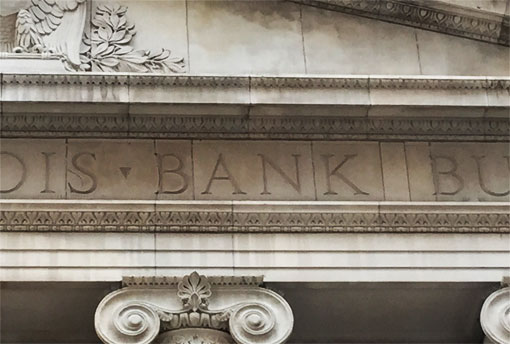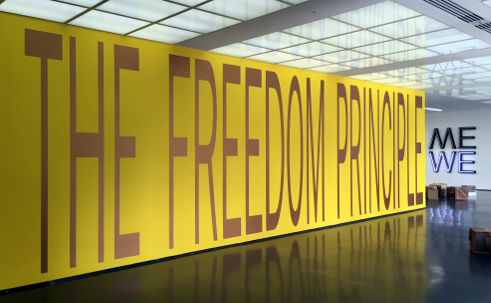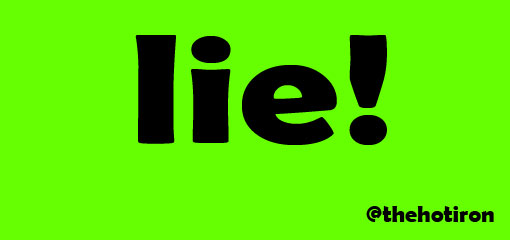All Progress Requires Change But Not All Change Is Progress

Recently a friend posed this question to me, “hey Mr. Blogger, answer this: all progress requires change, but not all change is progress.” Yes, asked me it in just like that, and they did not tell me why they were asking me or if the statement came from somewhere other than their own brain.
Needless to say, their question got me thinking. I really didn’t care about the source and why as much as the statement itself… so much that it compelled me to write this.
When I first heard this, 2 things came to mind. The first was a quote from the song “Freewill” by the band Rush, which goes, “if you choose not to decide, you still have made a choice.” Don’t ask me how this association was specifically made; I have always loved that line as it is one that frequently comes to mind when faced with a difficult situation or choice, or after I was and I may not have chosen or waited too long and options may have gone away.
The second thing that came to mind was the pure definitions of each word – progress and choice. Maybe it has something to do with growing up a few miles from the home of the original American dictionary. Where that is part of it, I always like to set my foundation from which to build a thought and idea from. According to Merriam-Webster, the definition of progress is movement forward or towards a place; the process of improving or developing something over a period of time. The word change is the act, process, or result of changing; an alteration, transformation, substitution. There is more depth to each definition and each word is linked to its full definition.
Gut reaction followed by reflection
Going into writing this, I agreed with the statement. I equate progress to forward motion and accomplishment, and change to something being a catalyst for it, though forward motion and accomplishment is not necessarily progress in itself. You can change your surroundings, but it doesn’t necessarily equate to progress in your life. Each one in themselves has tangible qualities, but only progress has the positive intangibles of pride and satisfaction. This speaks to why the organizers of the 1933-1934 Chicago’s World Fair likely nicknamed it “A Century of Progress” and not “A Century of Change.”
As I thought about this more, I found these 2 words – change and progress – need each other. In order to progress and move forward, you must act, evaluate and most likely change something in order to move forward. Whether it’s where you live, a job, a customer or whatever, many times doing what you did before to get you where you are won’t take you any further. That change doesn’t have to be monumental – it may just be a tweak – but something different is often needed.
Change in itself is always happening – whether the weather, people, etc. – and reacting to that change with appropriate actions – big or small – will lead to progress, not the mere change itself.
Of course this is how I interpret this statement today. In the future, with whatever happens in my life – and changes and progresses – will most likely have an impact on this analysis. At least for now, I hope this addresses my friend’s query. It has definitely adjusted my thinking as now I will be looking for progress in my life. It this statement impacted your thinking – or not – please share your thoughts in the comments to this post.
This is from The Hot Iron, a journal on business and technology by Mike Maddaloni.
Did you enjoy this? Subscribe to The Hot Iron by RSS/XML feed or Read by Email.
Business • Diversions • Strategize • (2) Comments • Permalink
Web Content Horror Stories For Halloween

Come gather children and adults, huddle by the flickering fire, sip on hot apple cider, all while I, in the shadowy light of the fire, tell stories this Halloween season – true stories, horror stories of Web site content!
The Scream
Many, many years ago I worked for a tech consulting firm that was undergoing rebranding. This exciting process was to include a new look to the Web site. As we were in the business of building Web sites, we were going to build out the ability to maintain the site as well. Note this was years before the term content management system, or CMS, was ever in vogue.
The project was assigned to myself and another senior guy I will call Rocky. There was a little bit of competitiveness between us, partly due to our own cockiness and confidence in our abilities, not to mention he was a Packers fan and I was a Patriots fan, but I digress. In some regards I think that's why both of us were put on the project. We would be building the technology, integrating the new branding and graphic design from the marketing firm and designing sample content, as the president of the company would be writing all of the content, as this is what he told us.
Despite our attitudes, Rocky and I worked very well together. We built out the front-end, back-end, database and sample “lorem ipsum” content. And we did it all on time.
Here's where the story gets scary... the president asked to meet with us at a predefined time in the project plan to review our progress. To his surprise – which quickly and surprising to us we saw on his face – we showed him a, for the most part, complete Web site. All it would need is a few small adjustments... and a lot of content.
Though we were in a brightly-lit office, the room got suddenly dark and eerie. The typically congenial voice of the president got heavy and creepy. Then, timed with a hypothetical clap of thunder, the screaming began.
As time and attempts to forget about this have clouded specifics, in general our frightening leader said, “how dare you finish on time when I didn't even start to write the content!” What? We were numb to the proverbial “second one” he was ripping into us, and it seemed like hours afterwards we were still stunned. Then, after he left, we laughed, hysterically, for what also seemed like hours.
The Original Blank Page
It was a work day like any other, multitasking away in and on my Web consulting business. A friendly chime sounded as my often co-collaborator and an amazing graphic designer n her own right – we'll cal her Sierra – called as we were partnering on a Web site proposal. It was mostly written, reviewing back and forth by email, and we were meeting to make a final walkthrough together before submitting it to the prospective client.
As we went through the proposal line-by-line, word-by-word, it was almost as if a light springy piano tune was playing in the background by none other than Liberace himself. As we got through the end of the document, where we listed references and example Web sites, we both paused as we were reviewing the list. Even though we were on the phone, over 1,500 miles apart, it was as if we were in the same room, pointing to the same spot in the document.
Just as Sierra began to say what I was thinking, it was as if Liberace was vaporized to dust and the Phantom of the Opera took over at the bench and with the flick of some switch, the piano became a pipe organ, and the Phantom played the most sinister music known. Then Sierra spoke, "THIS Web site... when was the last time you looked at it?” The silence over the phone was broken by more organ music, which was timed with each of us typing the Web site's URL into our Web browsers.
As we navigated beyond the home page the music got louder and more daunting, as we looked at empty page after empty page, with nothing on them at all – not one word of content! The shrieking in our voices was beyond our control. This Web site had been live for almost a year with several completely blank pages, to which we could not believe. My gut reaction took over, as I logged into the CMS for the site and placed some basic “coming soon” messages. There was no way we could use this great looking Web site with blank sub-pages as an example of the great work we did. Where the placeholder text was not the ideal situation, it was really all we could do, and in the end turned out to be sufficient as we won the proposal.
Only a Few of Many Stories
Over the years I have encountered Web content horror stories, almost from the time I started creating Web sites. I share these stories not to criticize people or to make fun of them, rather to serve as a cautionary tale of the importance of content development for Web sites. It is not something to do casually – or not at all – and is vital to the success of your site.
Boo!
This is from The Hot Iron, a journal on business and technology by Mike Maddaloni.
Did you enjoy this? Subscribe to The Hot Iron by RSS/XML feed or Read by Email.
Blogging • Build • Business • Strategize • Web Design • (0) Comments • Permalink
Top 7 Must-Have Features In A New Bank Account

I have always had a love/hate relationship with banks. Love too, you say? Yes, as I worked through most of college at banks, doing everything from check processing to mortgage collections, I gained insight and appreciation for how banks operate. Hate, as most people do, for as consumers we feel banks are not on our side and are just trying to slap fees on us and make it hard to access our money, among other choice topics I am sure.
As I have these negative opinions of my current bank, I have often considered leaving them for someone else. But why?
I decided to write down the features of consumer banking I am looking for. Rather than thinking of the type of bank (or credit union) I'd ideally like to move to, I decided to focus initially on my “pain points” - or the things I think about most often when banking.
So whether you are with a bank and looking for a new account, or a student in a new college town and looking for a local bank, here's what I am considering for my must-haves in a new bank.
- 1. All free – “All” includes checking, savings, ATM usage, foreign ATM usage, online banking, bill pay and cashiers checks, plus no minimum balances. Am I asking for a lot here? No, as bank accounts are the entre into loans with banks, where the real money is made.
- 2. True overdraft protection – As in a credit line, not to a credit card tied to your account. Granted most banks that have overdraft protection have real credit lines, however my current bank does not.
- 3. Non-cheesy online banking and bill pay – I always ask to see a demo, as some online banking is cheesy, especially for smaller banks who use third parties, or like my current one who has a “virtual wallet” metaphor that I never use and is just added clicks to getting to my balance. Oh, and I like to see my check images in online banking as well, especially as I always chose the paperless statements option.
- 4. Bill pay with money coming out of my account right away – This is one of my pet peeves. Where most people like playing the Checkfloat Game, I don't, namely as I lose all the time. If I use bill pay, I want the money out of my account right away.
- 5. ATM accepts cash and checks for deposit – I am hooked on depositing cash into an ATM, the ATM counting it, and crediting it right away.
- 6. Mobile banking with check deposit – Having the ability to not go to a bank or ATM to deposit a check is a wonderful thing.
- 7. Saturday hours – Despite what I said above, there are always the occasions when I need to go to a bank and talk with a human being. As my schedule doesn't always allow me to go during the week, going on a weekend day is a nice feature to have.
When I evaluate a bank, I will simply bring a printout of this blog post with me as my checklist. I would love to have your thoughts as to what features you look for, and feel free to leave them here in the comments to this post. That way they will be on the same printout checklist.
In the meantime, I’ll share this video for the song, “I Hate Banks” by Mojo Nixon and Skid Roper from the 1980’s, which Chicago Cubs fans will especially like. Note it may not be safe to play at work, which of course depends on where you work!
This is from The Hot Iron, a journal on business and technology by Mike Maddaloni.
Did you enjoy this? Subscribe to The Hot Iron by RSS/XML feed or Read by Email.
Business • Strategize • Technology • (0) Comments • Permalink
Retreat Reflect Return

You have certainly heard the expression, “if you can't stand the heat, get out of the kitchen.” Where the idea behind it is that when things are going (or cooking) it can get intense. However I don't think the phrase was to infer you have to spend every waking moment in the thick of it. At least I don't think that.
Early in my career this was something I learned – you need to sometimes get a break from it all – even for a little bit – to be able to keep sharp and focused on the task at hand. Not to forget if you are stuck on something, staring at it all day in itself will not solve it.
Early Lesson Learned
Years ago I was told a story by a manager at the time that really hit home with me, and changed my work habits to include stepping away from it all.
In the story, he was in a distribution center, standing among the racks of palleted merchandise with senior executives of the client. There was a problem and everyone was talking but nobody was really contributing to the situation. In the middle of this, he hopped on a hydraulic scissor lift and went up about 3 levels of the racks. Several minutes later, he lowered the lift and descended, and had the solution to the problem.
Where all of the clients thought he went up on the lift to physically solve the problem, he actually did so to get away! He couldn't think among the bloviating of everybody so he went up the lift, and away from them, to clear his head and logically solve the problem, which he was able to do once free of the clutter. The client was impressed, and in the end had no idea they could have been an impediment to solving the issue at hand.
In short, what he did was retreat, reflect and return.
This is something I have done and continue to do. I touched on this when I wrote how I came up with the name of my Web site assessment checklist. Among some of the ways I have and still do retreat, reflect and return to the workplace include:
Penguins – When I worked in downtown Boston I would go to the New England Aquarium and lean over the railing of the penguin pool at the base of the giant tank. I would stand there and watch the penguins for a while. They have such a simple life, and watching their interactions with each other made for a great way to clear my head.
Plymouth Rock – When I worked in the town where the Pilgrims from England landed in the New World in 1620, I would occasionally go to a sub shop in the center of Plymouth, Massachusetts, across the street from the infamous rock on which the Pilgrims reportedly were first to step on when descending from their ship. I would take my lunch from said sub shop and eat it while leaning over the railing of the shelter which covers the Rock. Staring at the Rock and Plymouth Bay behind it was a great stress reliever.
Modern art – My latest venue is the Museum of Contemporary Art in Chicago, located across the street from my newly-joined workplace. Though said workplace is a great environment to work in and in no way stressful than, say, my last job, it is still nice to recharge my brain a bit on Tuesdays when the museum is free to Illinois residents. I do plan on getting a membership there as I may find the need to think a little differently on another day of the week other than Tuesday.
I am eager to hear if you have any techniques – or destinations – of your own, when you retreat, reflect and return. Please share then in the comments of this post.
This is from The Hot Iron, a journal on business and technology by Mike Maddaloni.
Did you enjoy this? Subscribe to The Hot Iron by RSS/XML feed or Read by Email
Business • Strategize • Technology • Thrive • (0) Comments • PermalinkIt’s OK To Lie On Web And Mobile Security Questions

Your first love. Your first pet. Your first car. And Mom – what was her last name before she got married?
The preceding paragraph was not a trip down memory lane. Rather it is a list of some of the most commonly asked questions on Web sites and mobile apps to verify who you are. Where at one time a simple username and password were enough, now you could be answering one of almost a half-dozen questions and answer pairs to log into an online service. With everyone wanting a higher degree of security, these types of extended login functions are becoming more commonplace.
But I have a secret to share with you. Lie!
When these challenge questions started popping up on online services, I pondered their need, as well as the fact that more personal information about myself would be out there in random databases, and probably not encrypted or secured as well credit card information (or as well as credit card information should be secured!). Though these seem harmless questions, the information can be very personal, yet for some reason we share it.
That’s when I decided to lie – rather than put my Mom’s maiden name on the Web or app form when it is asked, I lied. Instead I put in something different altogether. For ease of remembering, I often use the same answers to similar questions, bit if I am using an online service I may not go back to, I will completely make something up.
The advantage to using a made-up answer to a security challenge question is that should this information get hacked into or otherwise compromised, further personal details of my life are not out there. The disadvantage to this is you will need to remember or log somewhere these questions and answers. Granted there are online secured “wallets” for this type of information, but those too need passwords and perhaps challenge questions and answers too.
Until something better comes along for secured access to online services, username, passwords and challenge question and answer pairs will be prevalent. By using an answer other than the truth, you can feel a little more private. Plus nobody has to know your first pet was a French poodle named Fifi Petunia Marmalade.
This is from The Hot Iron, a journal on business and technology by Mike Maddaloni.
Did you enjoy this? Subscribe to The Hot Iron by RSS/XML feed or Read by Email
Business • Strategize • Technology • Web Design • (0) Comments • Permalink




